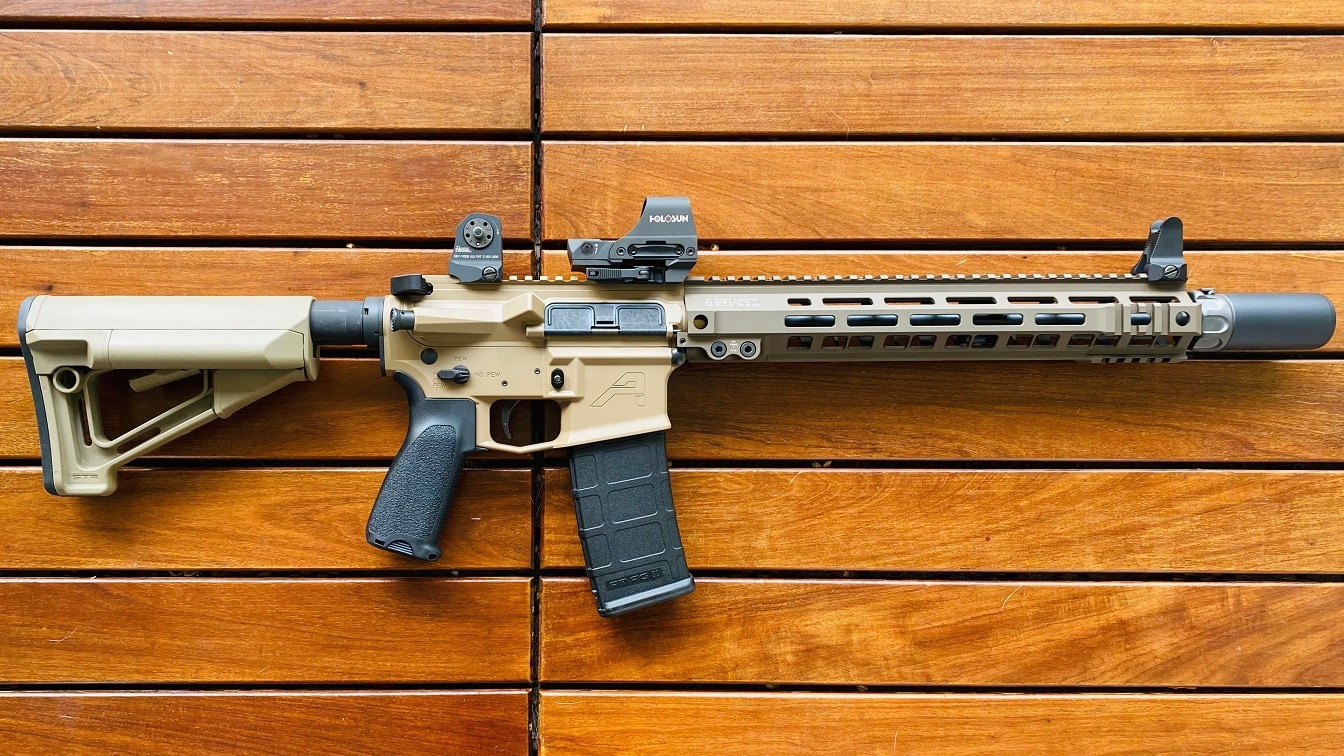Aahh, the dear ol’ M16 rifle, AKA “The Mattel” AKA “The Black Rifle” AKA “Black Plastic Fantastic.”
Easily the most controversial firearm ever issued to the U.S. Armed Forces, although the Beretta M9 pistol is arguably a close second in that regard.
Aahh, the dear ol’ AR-15, also controversial, though for different reasons, as it’s right up there with the AK-47 as the rifle most hated by media pundits and politicians of leftist political stripe.
So then, aren’t the two rifles essentially one & the same? What’s the difference?
It’s easy enough to say that the AR-15 is the semiautomatic-only civilian version of the military-grade M16, but that’d be a bit of an oversimplification.
AR-15 Origins
No chicken or egg controversy here: the AR-15 actually came first. It was invented in 1956 by Eugene Morrison Stoner – who had also invented the AR-10 – and was initially manufactured by Armalite.
Mr. Stoner designed the weapon to be a lighter-weight alternative to the M14 in service with the U.S. military at the time. Also, he wanted the troops to have a smaller, lighter-weight caliber cartridge that would enable the troops to be able to carry more ammo, hence the chambering for the .223 Remington (later 5.56x45mm NATO) cartridge.
Due to a combination of financial troubles, manpower shortages, and lack of sufficient production capacity, Armalite sold the AR-15 rights to Colt in 1959, and it was the latter company’s big-name reputation that spurred the success of the rifle. Luckily for Armalite, their own fortunes were eventually revived by the AR-18/AR-180 rifle series, which in turn gained its own notoriety for becoming the weapon of choice of the Provisional Irish Republican Army AKA “the Provos” during The Troubles/Na Trioblóidí, extolling that particular rifle’s virtues in song like the original IRA had done with the Tommy Gun back in the day.
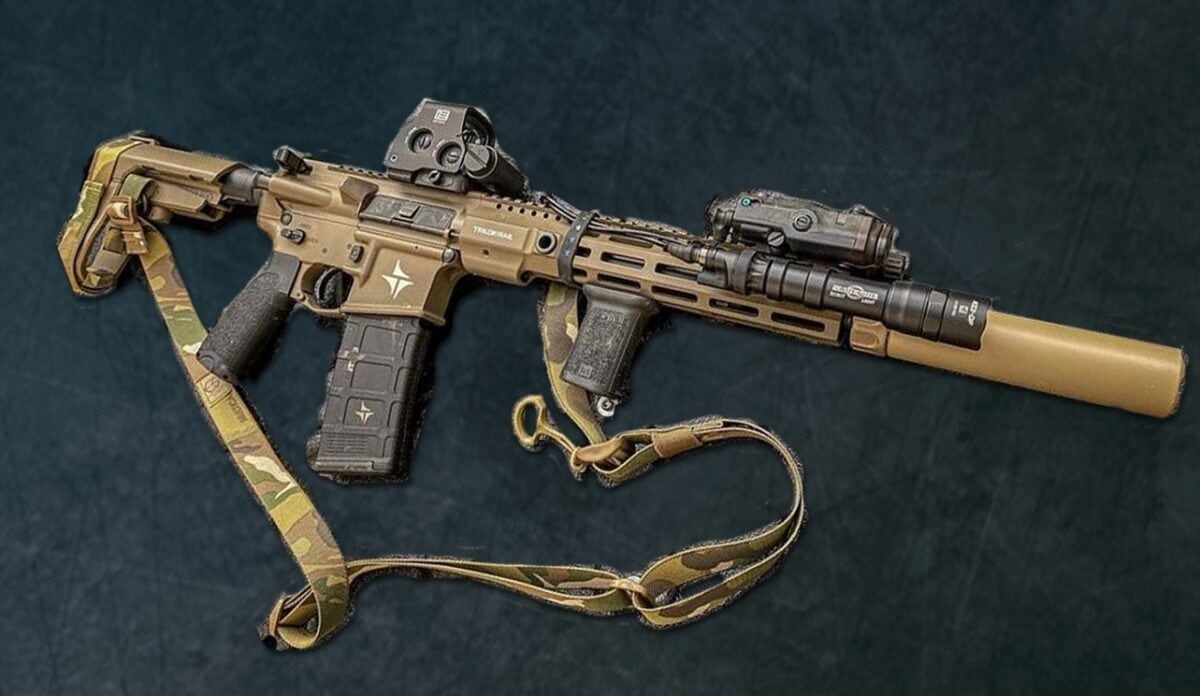
Image: Creative Commons.
Skipping forward in history a bit to avoid redundancy with the M16 segment of this article, Colt’s patents expired in 1977 (coincidentally the same year that Elvis expired), clearing the way for other gun manufacturers to begin copying the AR-15 design. However, “AR-15” remains a Colt registered trademark which it uses solely for its line of semi-auto rifles.
Nowadays, you have more different brands of AR-15-style rifles than you can shake a stick at, from Bushmaster to Daniel Defense to Smith & Wesson to name but a few…a testament to the platform’s enduring popularity with American civilian gun enthusiasts and law enforcement officers alike.
It also comes in various additional calibers, from .22 LR to 9x19mm Parabellum to 6.5mm Grendel.
M16 Origins
Okay, time to rewind a bit. Colt started marketing the AR-15 to the U.S. military in 1962, and the U.S. Air Force was the first to jump on the offer, doing so thanks in no small part to the influence of then-Chief of Staff Gen. Curtis E. LeMay.
The sister services soon followed suit, and Colt officially redesignated the military version as the M16 in December 1963, and it officially entered into production and service under that moniker in 1964.
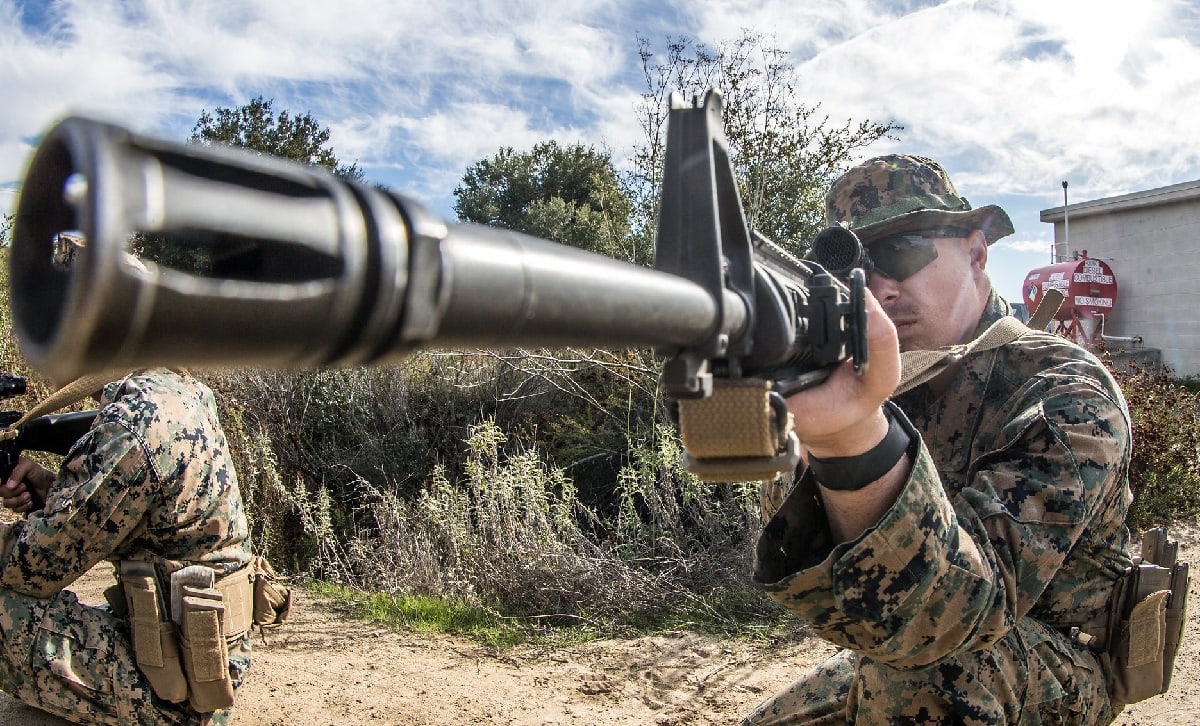
Lance Cpl. Mitchell Smith, a small arms repair technician with 1st Maintenance Battalion, Combat Logistics Regiment 15, 1st Marine Logistics Group, sights in on a barrel at the 1st Maint. Bn. Marksmanship Trainer Unit on Marine Corps Base Camp Pendleton, California, Jan. 7, 2020. The MTU holds a week-long refresher course about proper holds and techniques with the M16 and M4 service rifle before allowing Marines to re-qualify on their annual range. Smith is a native of San Jose, California. (U.S. Marine Corps photo by Lance Cpl. Alison Dostie).
The M16 started off as a true full-auto rifle but was remodified to fire 3-round bursts starting with the M16A2 variant in 1983, which also replaced the .223 Remington with the then-new 5.56x45mm NATO cartridge.
M16 and the Vietnam War
Of course, as is well known, in that 20-year gap between the original M16 and the M16A2, the rifle generated a lot of controversy due to reliability issues during the Vietnam War. To reiterate what I stated in my standalone article on the M16 back in August, there were seemingly countless incidents of American GIs dying in the literal and figurative muck of the jungles of Nam due to hopelessly jammed M16s.
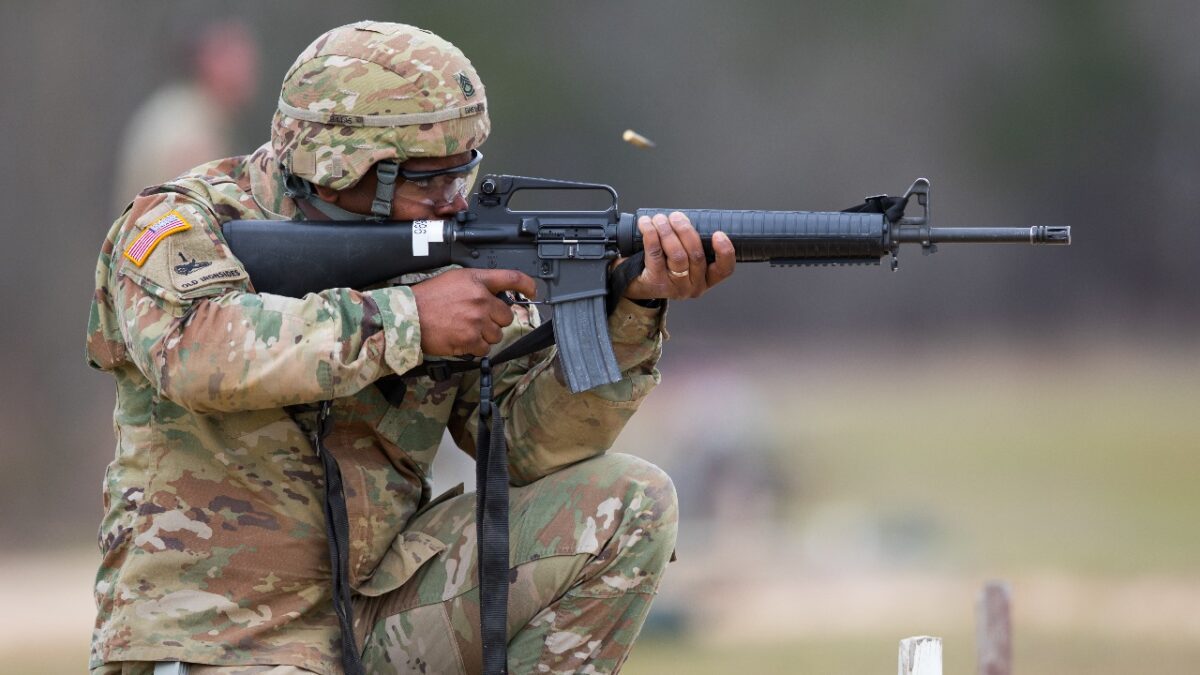
U.S. Army Reserve Sgt. 1st Class Harrison Brewer, G4 Chief Movements Supervisor for the 335th Signal Command (Theater), fires an M16 rifle on a range at Fort Gordon, Georgia, March 8, 2019. Soldiers from the 335th Signal Command (Theater) headquarters completed warrior tasks and battle drills to include weapons qualification, grenade practice and roll over training during a four-day training designed to increase their warfighting abilities. (U.S. Army Reserve photo by Staff Sgt. Leron Richards)
The most frequently recurring malfunction was failure to extract fired cartridge cases, typically attributable to a heavily carbonized and rust-pitted chamber, and as David Lane of PewPew Tactical pointed out, the two main culprits were: (1) the Army negligently using the wrong powder in their ammunition; and (2) the chamber and bore of the barrels were not chrome plated.
Eventually, these problems were corrected, and the M16 – in its compact M4 variant – remains in service with the U.S. military to this day, but in many ways the old stigma of unreliability still lingers.
A-15 and M16: Personal Shooting Impressions
Just as the AR-15 preceded the M16, appropriately enough, I fired the AR-15 for the first time before I did so with the M16. It was in southern California – of all places, wouldya believe — June 1990 a couple of months shy of my 15th birthday and a week or two before I graduated from Walter Reed Middle School, and the venue was an outdoor firing range in Saugus, Calif, bearing the oh-so-original (not!) moniker of A Place to Shoot.
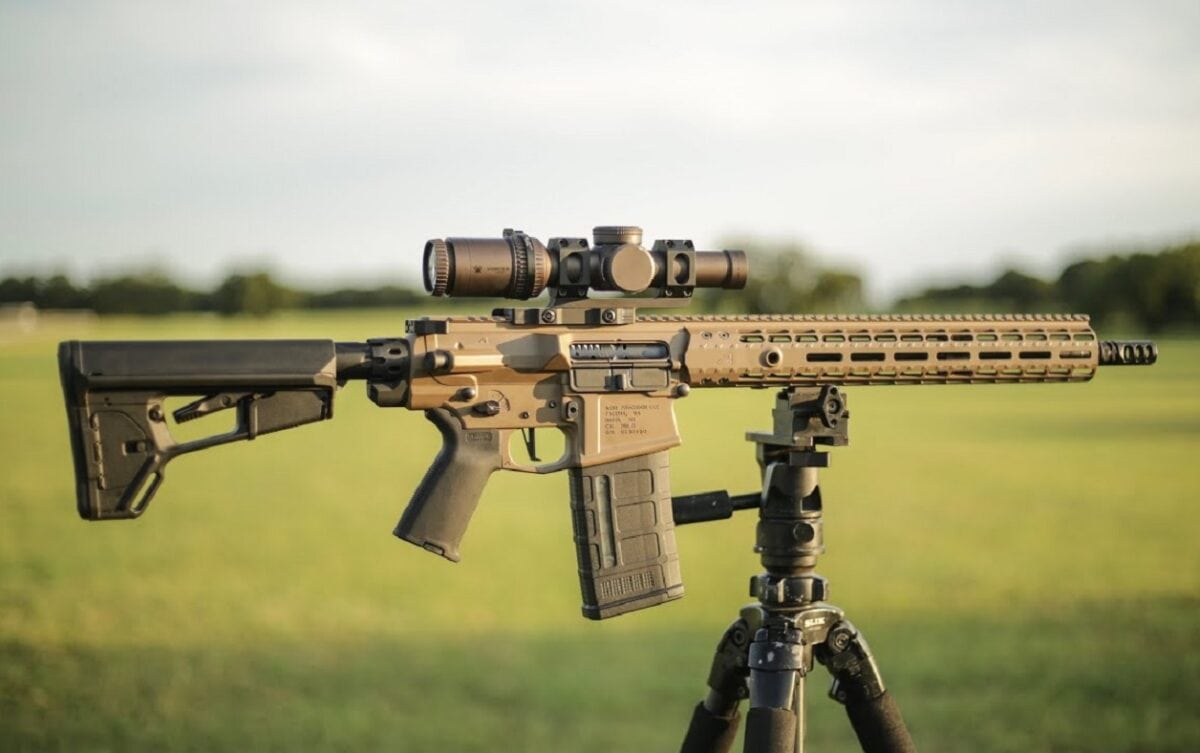
AR-15. Image Credit: Creative Commons.
The AR-15 was both the first semiautomatic rifle and the first centerfire caliber rifle I ever fired. Needless to say, it left quite an impression. Admittedly, since I hadn’t yet honed my long-distance shooting skills, I did all of my shooting from 7 yards, which is practically cheating for a weapon of this type. But boy, it sure was fun; a buddy of mine took a picture of me holding the AR at port arms while sporting a Bart Simpson t-shirt, BDU-style trousers, and a wicked Cheshire cat grin on my face.
Fast-forward to October 1999, I got my first experience firing the M16A2 via USAF Basic Military Training (BMT). Truth be told since we did our entire qual course in semiautomatic fire, it didn’t feel that much different from firing a civilian-style AR-15, and it was until I got to my first operational posting at Minot AFB, North Dakota, the following year that I got to fire the rifle in 3-shot burst mode.
Anyway, I managed to qualify Expert with it despite being afflicted with a nasty case of bronchitis that almost turned into pneumonia, scoring a 36/40. A month later, during technical training at the Security Forces Academy, I improved to 38/40.
Firearms Expertise of this Author: Christian D. Orr has 33 years of shooting experience, starting at the tender age of 14. His marksmanship accomplishments include: the Air Force Small Arms Ribbon w/one device (for M16A2 rifle and M9 pistol); Pistol Expert Ratings from U.S. Customs & Border Protection (CBP), Immigration & Customs Enforcement (ICE), and the Federal Law Enforcement Training Center (FLETC) Criminal Investigator Training Program (CITP); multiple medals and trophies via the Glock Sport Shooting Foundation (GSSF) and the Nevada Police & Fires Games (NPAF). Chris has been an NRA Certified Basic Pistol Instructor since 2011.
From 19FortyFive

